Auke Visser's Famous T - Tankers Pages | home
100 th T2-Tanker at Swan Island - Part 1
Source : Pacific marine Review, Volume 41, December 1944.
Two years and eight months back Swan Island, a flat sand bar in the Willamette River just below Portland, Oregon, was the site of the Portland municipal airport. In March. 1942, it was taken over by the Maritime Commission and a contract was given the Kaiser interests to build a shipyard there. with eight ways for tanker construction.
The first keel was laid July 1, 1942. and that ship was delivered on December 31, 1942. It is a significant coincidence that in 1840 the first American vessel built on the Pacific Coast - a schooner named Star of Oregon - was built on this site.
By November, 1943, Swan Island was producing five tankers a month, today the yard is delivering six tankers a month and has held the U. S. Maritime Commission “Tanker Champ Flag" for 11 out of the past 13 months.
On October 28 Swan Island launched its 100th tanker, and very appropriately christened that ship W. L. R. Emmet.
The tankers being built at this yard are the Maritime Commissions standard design known as T2-SE-A1.
T2 is a symbol for the hull characteristics. SE symbolizes single screw, electric drive. A1 symbolizes propulsion power of 6600 shp at 93 rpm. These tankers are 523 feet 6 inches long. by 68 feet beam; of 16.530 dw tons capacity: capable of transporting 142.000 barrels of oil plus a deck load of war supplies; fitted to carry a crew of 54 and an armed guard of 28.
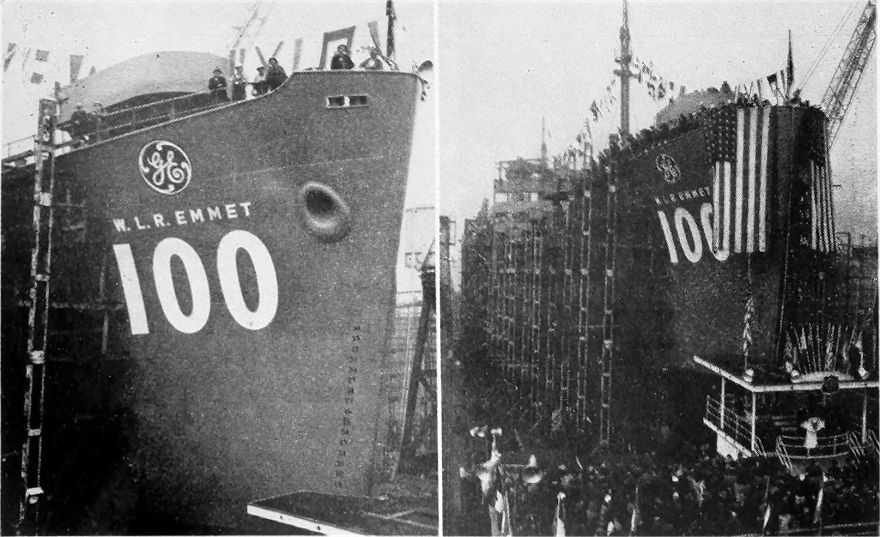 Left : The W. L. R. Emmet shortly before christeninq. Right : Crowd on launching plafform during The ceremonies before fhe chrisiening of the Emmet.
An electric motor drives the propeller. This motor is operated by electric energy supplied from a generator driven by a steam turbine. The turbine takes its heat energy in the form of 600 psi steam from two water tube steam generators.
The General Electric Company has supplied all of the turbo - electric drive machinery for all the tankers built at Swan Island. The company itself was honored at the occasion of the first launching of a tanker at this yard when the ship was christened, Schenectady after the site of the headquarters of General Electric.
Now the 100 th tanker is named after the G. E. Co. engineer who first developed and promoted the electric drive idea.
Of the electric drive and its early applications W. L. R. Emmet says in his autobiography:
“I early saw the disadvantage of low speed turbines directly connected to propellers and thought of the possibility of electrical transmission ships so that the turbine and propeller could both be run at their most desirable speed. Our earlier turbines were not good enough or compact enough to justify their use in this way on board ships, but as soon as they became better, smaller and lighter I began to turn my attention to the possibility of turbo - electric ship drive. My frst aim was to select the case where the largest measure of improvement could be accomplished, and I decided that this was the case of the warship which needed to cruise economically at low speed and at the same time to have very large power available for high speed operation in war emergency.
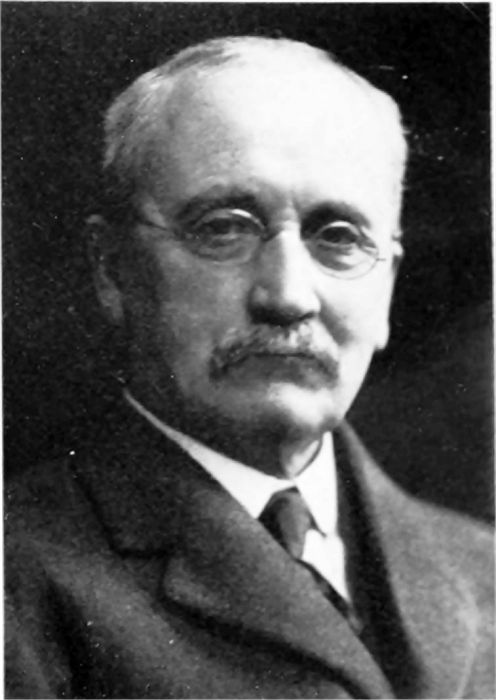 W. L. R. Emmet.
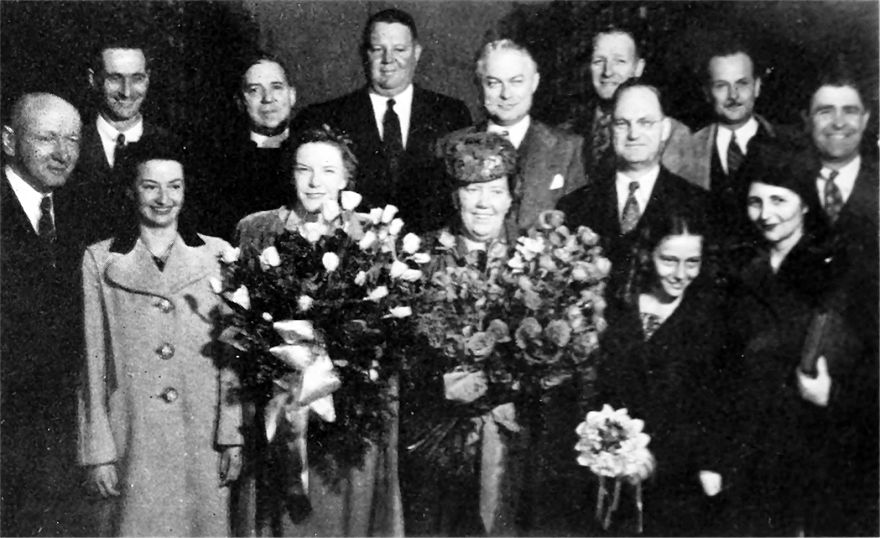 Left to right are, bottom row:
A. S. Moody. commercial vice presidenv, General Electric Co., Porlland, Ore.; Mrs. Paul Evans; Mrs. Moody, who was matron of honor; Mrs. J. W. Belanger, sponsor; Mr. Belanger, manager, Federal & Marine Divisions, General Electric Co., Schenectody: Miss Madeleine Wetten, flowergirl; and Mrs. P. Wetten.
Top row: P. Wetten; The Riqht Reverend Benjamin Daqwell, D.D.. Bishop of Oregon; Tam J. Shepherd, General Electric Co., Washinqfon, D. C.: Carl Flesher, West Coast Regional Direcfor, U. S. Maritime Commission Consfruction Division; F. Lowell Garrison, San Francisco, West Coast Represenfafive — Publicify Divisions — General Elecfric Co.; Don Frederickson; and A. R. Nieman, general manager, Kaiser Co., lnc., Swan Island Yard.
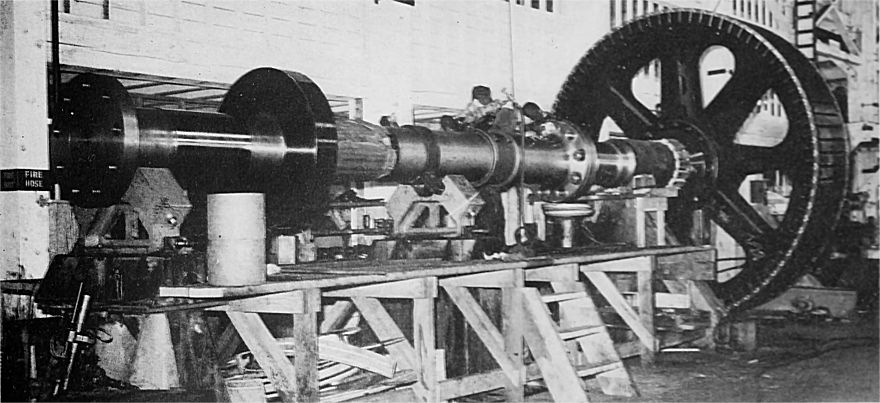 Thrust shaft is fiffed to General Electric propulsion motor shaft of Swan Island.
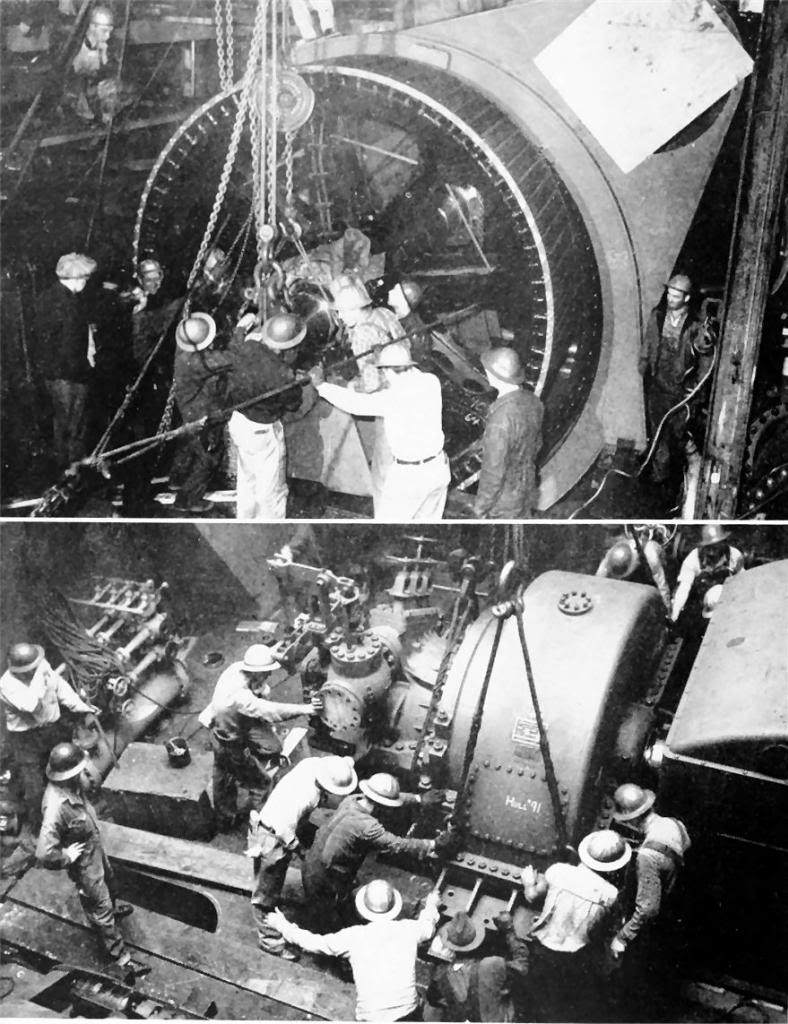 Top of page: Rotor of G. E. main propulsion motor being lowered into place.
Photo at the bottom of page : G.E. turbine is set in place. ( In this case for Hull No. 91 ! )
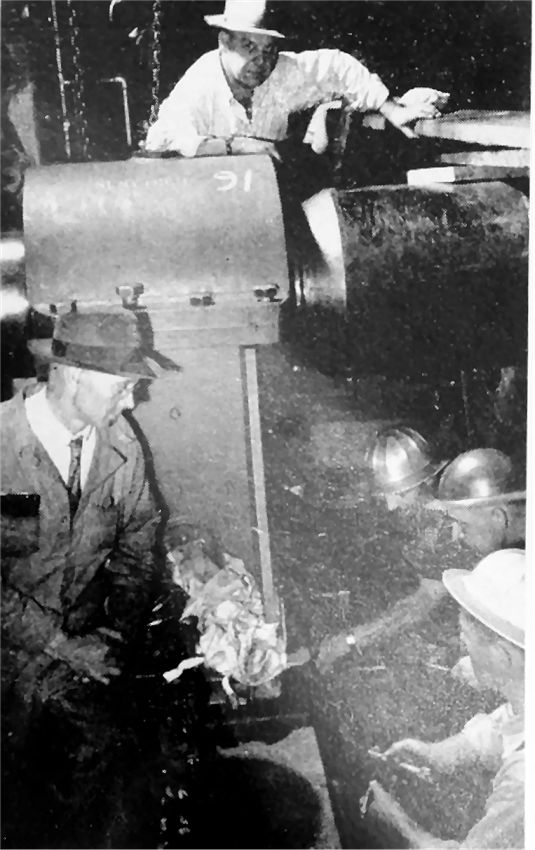 Lower left: Setting the after bearing for the 6000-hp main propulsion synchronous motor. ( In this case for Hull No. 91 ! )
|